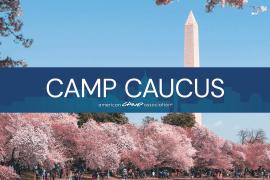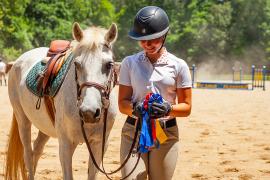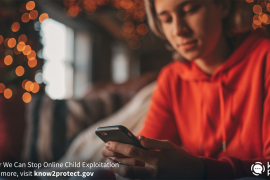As 2021 began, we all hoped for a better year than the one before, including a successful vaccination effort. Whether the year lives up to our hopes or not, it’s time to start planning how to reopen your school camps, youth camps, day camps, and summer camps.
Although camp may look and feel a bit different, with elbow bumps instead of our beloved high fives, it will still be good to get back to offering kids a place to explore, learn, interact with each other, and have fun.
As we move forward with reopenings, we’ll have to keep in mind many health and safety standards to minimize the risk of COVID-19 transmission. While each part of the country has its own state and local regulations, here are some overall tips to help you safely open your camp during 2021.
1. Go Contactless with Digital Tools
To encourage as little physical contact as possible, get rid of paper forms and other manual processes. Fortunately, there are many digital tools you can use to facilitate a contactless environment. Doing this also means you won’t have to wipe down pens, clipboards, and countertops after every check-in.
For example, you can set up an app or registration landing page to share your customized camp registration, waiver, and payment forms. The app will help parents, campers, and staff enjoy an easy check-in and check-out process. Camp management platforms also offer ways to make the camp experience safe and convenient.
It’s a good idea to share your safety protocols on your camp website, in social media posts, in emails, and via marketing materials so that parents, kids, and staff see a consistent message about how you’re working hard to keep everyone safe.
2. Schedule and Segment Smaller Groups
The more physical interaction campers have with staff and each other, the greater the risk of spreading COVID-19, so it’s important to restructure your camp into small cohorts. This way, campers can remain with a smaller group and a more limited number of camp staff throughout their time at the camp. But even within a cohort, everyone should remain six feet apart, including during any nap or sleepover periods.
Discourage campers from sharing any belongings, and maintain separate storage containers or cubbies for each camper. In addition, make sure that campers don’t share games, art supplies, learning aids, books, electronic devices, or other items. Where possible, use plexiglass dividers in bedroom and bathroom areas. Also, post signs that help campers to stay socially distanced.
3. Prioritize Outdoor Activities
Plan to host as many outdoor activities as possible. You may be able to move some of the activities you would normally host in a cabin or a rec center to the outdoors. More space and fresh air will provide a safer environment for your campers. Consider how to start sporting activities again, wherever possible, based on current state and county guidelines.
4. Establish and Implement Health and Safety Protocols
Consider investing in portable hand-washing and sanitizer-dispensing stations to encourage all campers and staff to continually wash and sanitize their hands throughout the day. Train staff to ensure they help all campers maintain proper hygiene. Similarly, institute a mask protocol for as long as your local regulations require it.
You may want to create a formal cleaning schedule for all areas of the camp with set times during which everything is sanitized and wiped down, especially frequently touched areas like door handles and similar surfaces.
Inform staff and camp members about the timing and frequency of these clean-ups by posting a cleaning schedule. And post signs throughout the camp to remind everyone about safety protocols and to show the locations of sanitizing and handwashing stations.
Maintain a supply of masks, wipes, hand sanitizer, and cleaning supplies to ensure there’s always enough on hand for each camp event.
5. Have a Contingency Plan Should Anyone Get Sick
Make sure that all employees know it’s OK to stay home when they are sick. Have backup staff available should you need them.
Create a plan to separate anyone at the camp who may have been exposed to COVID-19. This means creating a quarantine area that provides a physically distanced place for campers or staff who may have COVID-19. One or two staff members should be designated to take care of these campers and/or staff.
Draft communications to send to parents in the event of potential COVID-19 exposure. Establish refund policies as well.
Additional Resources
The Centers for Disease Control and Prevention (CDC) has put together a helpful resource for youth programs and camp operators: the CDC’s Youth Programs and Camps Readiness and Planning Tool. Here, you can find a checklist and other valuable tips to reopen your camp safely so that kids can get back to being kids.
This blog post is provided by JotForm. JotForm helps you create online forms and collect data, all without needing to write a single line of code.
Photo by Kelly Sikkema via Unsplash
Periodically, the American Camp Association (ACA) makes timely and relevant information about products and services available to its members so they can make informed decisions for their camps. However, the ACA does not endorse products, services, or companies.
The views and opinions expressed by contributors are their own and do not necessarily reflect the views of the American Camp Association or ACA employees.



